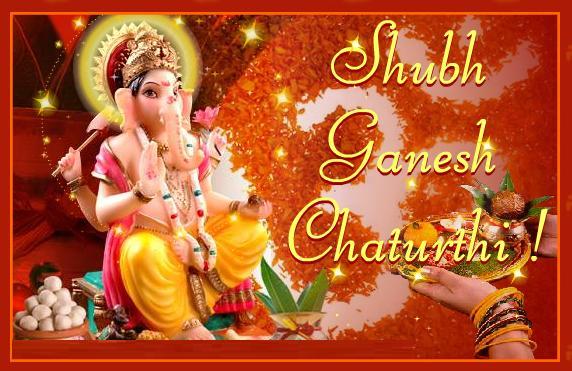
Ganesh Chaturthi is the Hindu festival celebrated in honour of the Lord Ganesha. This is a very auspicious day celebrated to pray the god so that every new activity that is started is successfully completed without any obstacles.
Chaturthi means “fourth day” or “fourth state”. Celebrations are traditionally held on the fourth day of the first fortnight (Shukla Chaturthi) in the month of Bhadrapada in the Hindu calendar, usually August or September in the Gregorian calendar. Bandra pad corresponds to Virgo in solar calendar. The festival generally lasts ten days, ending on the fourteenth day of the fortnight (Anant Chaturthi).

The festival has been publicly celebrated in Pune since the era of Shivaji (1630–1680, founder of the Maratha Empire). The Peshwas (hereditary administrators of the empire from 1718 until its end in 1818) encouraged the celebrations in their capital, Pune, since Ganesha was their family god (Kuladevata). With the fall of the Peshwas, the Ganesha festival lost state patronage and became a private family celebration in Maharashtra until its revival by Indian freedom fighter and social reformer Lokmanya Tilak.
The current Maharashtra public festival was introduced in 1892 by Bhausaheb Laxman Javale ( also known as Bhau Rangari), who installed the first sarvajanik (public) Ganesha idol after he met with Balasaheb Natu and Krishnajipant Khasgiwale at his home. When he visited the Maratha-ruled state of Gwalior, Khasgiwale saw the traditional public celebration and brought it to the attention of his friends in Pune.
In 1893 Tilak praised the celebration of sarvajanik Ganesha utsav in his newspaper, Kesari, and the following year he installed a Ganesha idol in the Kesari office; his efforts transformed the annual domestic festival into a large, well-organised public event. Tilak recognized Ganesha’s appeal as “the god for everybody”, popularising Ganesh Chaturthi as a national festival to “bridge the gap between Brahmins and ‘non-Brahmins’ and find a context in which to build a new grassroots unity between them”, generating nationalistic fervour in the Maharashtrian people to oppose British colonial rule. He was the first to install large public images of Ganesha in pavilions and established the practise of submerging the idols in rivers, the sea or other bodies of water on the tenth day of the festival.

Encouraged by Tilak, Ganesh Chaturthi facilitated community participation and involvement in the forms of intellectual discourse, poetry recitals, plays, concerts, and folk dances. It was a meeting ground for people from all castes and communities at a time when the British discouraged social and political gatherings to control the population.
In India, Ganesh Chaturthi is primarily celebrated at home and in public by local community groups in the western states of Maharashtra,Gujarat,Rajasthan and Goa and the southern states of Karnataka,Kerala, Andhra Pradesh, Telangana, and Tamil Nadu.
Read Also: Ganesh Ji Vrat katha In Hindi Language
Lord Ganesha is addressed through the following mantra, popularly known as the vakratunda mantra:
